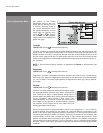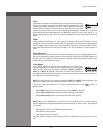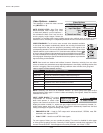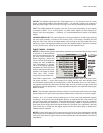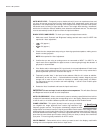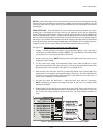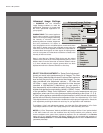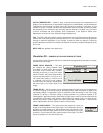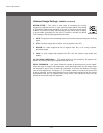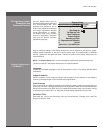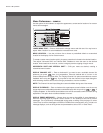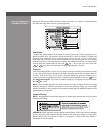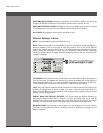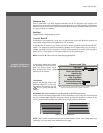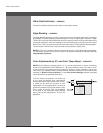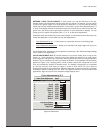
Wolf Cinema Owner's Manual
3-32
Advanced Image Settings - SUBMENU (continued)
MOTION FILTER — This control is most useful for smoothing out moving
images from interlaced sources. In most cases the proper Motion Filter setting
is automatically determined according to the type of incoming source signal.
However, if your source is jittery and/or tearing you may wish to “force” a setting
to ensure stable processing for this source—if desired, override the default
“Auto”settingbyselectingtheappropriatemotionlter:
AUTO: 1. Theprojectorwillautomaticallyusethecorrectmotionlteraccordingtotheincoming
signal.
STILL:2. For static images with no motion, such as graphics from a CD.
MOTION: 3. For video images that did not originate from lm, or for moving computer-
generated images.
FILM: 4. For video images that originated from lm. This will optimize image quality and
stability.
2/3 PULLDOWN THRESHOLD — This setting determines how sensitively the projector can
detectifanincomingvideosignaloriginatedfromlmornot.
DETAIL THRESHOLD—Use“DetailThreshold”todeneatwhatfrequencylevelthe“Detail”
control will begin to magnify high frequencies, which adds details back into the image. Raise
the threshold to ignore more of these high frequencies, and lower the threshold to magnify
more of these frequencies. A setting of “0”, for example, means no noise will be ignored and
allwillbemagnied.Anidealdetailthresholdisoneinwhichhighfrequenciesthatarecausing
objectionable noise are not magnied when using “Detail”, but frequencies which can help
sharpenanoverly-softimagearemagnied.
Section3►Operation



